Description
T-Nuts for Propeller Paramotor: Precision, Durability, and Safety in Every Flight
Paramotor enthusiasts and professionals alike understand the crucial role that every small component plays in ensuring a smooth, safe, and efficient flight. Among these components, T-Nuts for Propeller Paramotor stand out as indispensable elements that guarantee the integrity of your propeller assembly. Crafted for reliability, durability, and precision, these T-nuts form the backbone of a secure propeller mounting system, ensuring that every flight remains stable and controlled.T-Nuts for Propeller
What Are T-Nuts for Propeller Paramotor?
T-Nuts, also known as tee nuts, are specialized fasteners designed to provide a strong and secure connection between your propeller and the paramotor engine hub. Unlike standard nuts, T-nuts are engineered to withstand the intense vibrations, centrifugal forces, and mechanical stresses generated during paramotor operation.
They feature a flanged base and prongs that embed into the mounting surface, ensuring minimal movement and maximum torque retention. Their design eliminates the risk of loosening mid-flight, which is vital for both safety and performance.T-Nuts for Propeller
Design and Engineering Excellence
The design of T-Nuts for propeller paramotors reflects meticulous engineering and adherence to high-performance standards. Manufactured from premium-grade materials such as stainless steel or hardened alloy steel, these T-nuts resist corrosion, wear, and deformation. The precision threading allows for seamless integration with propeller bolts, ensuring a snug and secure fit.
Key Design Features:
-
Flanged Base: Enhances stability and distributes load evenly.
-
Embedded Prongs: Prevent rotation and maintain secure positioning.
-
High-Precision Threading: Guarantees a perfect fit for various paramotor models.
-
Corrosion-Resistant Material: Ideal for exposure to moisture and outdoor conditions.
The engineering behind these T-nuts ensures that they perform flawlessly under extreme conditions, providing pilots with confidence and peace of mind.
Safety and Control: A Paramount Priority
Safety is non-negotiable in paramotoring. A loose or malfunctioning propeller can compromise control, stability, and overall flight performance. T-Nuts for Propeller Paramotor are designed to significantly reduce such risks. By maintaining a secure connection between propeller and engine, they help prevent catastrophic failures.
Safety Advantages:
-
Enhanced Propeller Stability: Minimizes vibrations for smoother flight.
-
Secure Fastening: Prevents loosening even under extreme rotational forces.
-
Long-Term Reliability: Retains integrity over multiple flights without the need for frequent checks.
In addition to mechanical safety, these T-nuts contribute to improved flight control. Stable propeller mounting reduces unwanted oscillations, providing pilots with precise handling and responsive maneuverability.
Ideal Use for T-Nuts in Paramotors
T-nuts are versatile and suitable for a wide range of paramotor setups. They are compatible with most two-stroke and four-stroke engines and work effectively with composite, wooden, or aluminum propellers. Whether you are a recreational pilot, a professional competitor, or a tandem flight operator, these fasteners are essential.
Recommended Applications:
-
Solo Paramotoring: Ensures a safe, vibration-free flight.
-
Tandem Flights: Critical for carrying additional weight safely.
-
Competition Flying: Supports high-performance propellers under extreme conditions.
-
Adventure and Touring Flights: Resistant to diverse weather and environmental factors.
By choosing high-quality T-nuts, pilots guarantee that their propeller system remains reliable, regardless of the flight type or duration.
Technical Specifications
Understanding the technical aspects of T-Nuts for Propeller Paramotor helps ensure optimal compatibility and performance. Below are the standard specifications for most paramotor T-nuts:
| Feature | Specification |
|---|---|
| Material | Stainless steel or hardened alloy steel |
| Thread Size | Typically M6, M8, or M10 depending on propeller type |
| Flange Diameter | 12–18 mm (varies by model) |
| Prong Length | 3–6 mm |
| Weight | 5–15 grams per nut |
| Corrosion Resistance | High (suitable for outdoor exposure) |
These specifications provide the necessary information for pilots and mechanics to choose the appropriate T-nuts for their paramotor systems. Custom sizes and threading options may also be available to accommodate unique propeller setups.
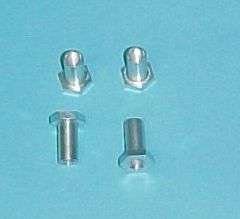



T-Nuts for Propeller Installation Guide: Secure Your Propeller with Confidence
Installing T-nuts is straightforward but requires attention to detail to ensure maximum safety and performance. Follow these steps for a secure and reliable fit:
Step 1: Preparation
-
Clean the mounting surface to remove dirt, grease, or debris.
-
Inspect the propeller and engine hub for any wear or damage.
Step 2: Insert T-Nuts
-
Align the prongs with the mounting holes.
-
Gently press the T-nut into place until it sits flush against the surface.
Step 3: Secure Bolts
-
Thread the propeller bolts into the T-nuts.
-
Tighten bolts gradually using a cross-pattern to distribute pressure evenly.
Step 4: Final Inspection
-
Ensure that the T-nuts are flush and bolts are tightened to manufacturer torque specifications.
-
Perform a pre-flight check to confirm stability and absence of movement.
Proper installation not only enhances flight safety but also extends the lifespan of both your T-nuts and propeller.
Cautions and Maintenance
While T-nuts are robust, maintaining them correctly ensures optimal performance over time. Here are essential maintenance tips and cautions:
-
Regular Inspection: Check for signs of wear, rust, or loosening.
-
Torque Verification: Ensure bolts remain tightened according to specifications.
-
Avoid Over-Tightening: Excessive force can damage threads or propeller hub.
-
Replace Damaged T-Nuts: Do not reuse T-nuts that show cracks or deformations.
-
Use Compatible Lubricants: Stainless steel T-nuts benefit from anti-seize compounds to prevent galling.
By following these precautions, pilots reduce the risk of mechanical failure and maintain smooth, vibration-free operation.
propeller
Smarter and Smoother with a High-Performance Propeller
When it comes to powered flight, your propeller is more than just a component—it’s the heart of thrust and efficiency. A high-quality propeller transforms engine power into motion, giving you the speed, lift, and control needed for safe, stable flight. Whether you’re navigating wide-open skies or narrow takeoff zones, having the right propeller makes all the difference.https://www.instagram.com/paragliding_explorer_wing_shop?igsh=bGg2dWxqNzQ1bzF4&utm_source=qr
Designed for Precision and Peak Efficiency
Crafted with aerospace-grade materials, this propeller is engineered to deliver maximum performance with minimal drag. Its optimized blade shape increases thrust without overworking your engine, resulting in longer flight times and smoother rides. Furthermore, the balanced design reduces vibration and noise, which means less stress on your frame and more focus on the sky.https://www.facebook.com/share/191pJQmuAy/
Additionally, the finish resists UV rays and moisture, extending the propeller’s life even in harsh flying environments. So, whether you’re flying in humid coastal air or dry mountain winds, this prop stands strong.Advance Companion SQR – Copy
Quick Installation, Seamless Compatibility
Time is precious, especially for pilots. That’s why this paramotor is built for fast, hassle-free installation. Compatible with most paramotor and ultralight engines, it allows you to upgrade your system without any complex modifications.
Moreover, its lightweight construction reduces strain on the engine while improving overall efficiency. That means fewer breakdowns, less fuel usage, and more time in the air.
Trusted by Pilots Who Demand More
Flight enthusiasts and professionals alike trust this paramotor for its consistent performance. Whether you’re preparing for a local flight or an extended journey, this part keeps your aircraft performing at its best. Additionally, its durability makes it a long-term investment in both safety and performance.
Take Flight with Confidence propeller
Don’t let an average propeller hold you back. Upgrade to a precision-engineered solution that enhances your aircraft’s capability. With this high-performance paramotor, every flight becomes more reliable, more efficient, and more enjoyable. So go ahead—boost your takeoff, improve your cruise, and land with total confidence.
Performance: Maximizing Propeller Efficiency and Flight Stability
High-quality T-Nuts for Propeller Paramotor are more than just fasteners—they play a crucial role in optimizing the overall performance of your paramotor. By securing the propeller with precision, these T-nuts ensure that every flight is smooth, stable, and responsive.T-Nuts for Propeller
T-Nuts for Propeller Reduced Vibration for Smoother Flights
Vibrations from a loosely mounted propeller can negatively impact flight performance, reduce engine efficiency, and increase wear on components. T-nuts minimize these vibrations by maintaining a secure and stable connection between the propeller and engine hub. The result is a smoother, quieter, and more controlled flying experience.polini parts
T-Nuts for Propeller Consistent Thrust and Propeller Alignment
When T-nuts are properly installed, propellers maintain precise alignment with the engine shaft. This alignment ensures consistent thrust generation, which directly affects acceleration, climb rate, and maneuverability. Pilots benefit from improved handling, whether during takeoff, cruising, or landing.polini parts
Durability Under Extreme Conditions
Paramotors can operate under high RPMs, turbulent air, and variable weather conditions. T-nuts are engineered to withstand these stresses without loosening or deforming. The material strength and embedded-prong design guarantee long-term reliability, so performance remains optimal even after repeated flights.
Performance Advantages for Pilots
-
Enhanced Flight Stability: Reduces propeller wobble for more precise control.
-
Improved Engine Efficiency: Maintains alignment to prevent energy loss.
-
Long-Term Reliability: Ensures consistent performance over multiple flights.
-
Versatile Use: Works effectively with solo, tandem, and high-performance setups.
Why Performance Matters
In paramotoring, even minor components can significantly influence flight dynamics. High-quality T-nuts enhance overall flight performance by maintaining propeller integrity, reducing unwanted vibrations, and ensuring that every maneuver is precise and controlled. For pilots, this translates into a safer, more enjoyable, and higher-performing flight experience.
How to Use T-Nuts for Propeller Paramotor
Using T-Nuts for Propeller Paramotor correctly is essential for safety, performance, and longevity. While these fasteners are designed for durability and ease of use, proper handling and installation ensure your propeller assembly remains secure and stable during every flight.
Step 1: Preparation
-
Inspect the Components: Ensure that both the propeller hub and engine mounting plate are clean and free from dirt, grease, or debris.
-
Select the Correct T-Nuts: Verify that the T-nuts’ thread size and flange diameter match your propeller and engine hub specifications.engine paramotor
Step 2: Installing T-Nuts
-
Align T-Nuts: Place the T-nuts into the designated mounting holes on the propeller hub, making sure the prongs face inward to embed securely.
-
Press into Place: Gently press each T-nut until the flange sits flush against the propeller hub surface. Avoid bending the prongs.
Step 3: Fastening the Propeller
-
Thread the Bolts: Insert the propeller bolts through the hub and into the T-nuts.
-
Tighten Gradually: Use a cross-pattern tightening method to ensure even pressure distribution across all T-nuts.
-
Torque Verification: Check that bolts are tightened to the manufacturer’s recommended torque specifications to prevent loosening during flight.engine paramotor
Step 4: Final Checks
-
Inspect for Security: Confirm that the T-nuts are flush, bolts are properly seated, and there is no movement in the propeller hub.
-
Pre-Flight Test: Before taking off, perform a low-throttle engine test to check for vibrations or unusual noises.
-
Regular Maintenance: Inspect T-nuts periodically after every few flights to ensure continued stability. Replace any damaged or worn T-nuts immediately.
Tips for Optimal Use
-
Use anti-seize or light lubricant compatible with stainless steel T-nuts to prevent galling.
-
Avoid over-tightening to protect both threads and the propeller hub.
-
Always use T-nuts designed specifically for paramotor applications; generic fasteners may fail under flight stresses.
T-Nuts for Propeller Safety and Control: Ensuring a Secure and Smooth Flight
In paramotoring, safety is paramount. Every component plays a crucial role in maintaining stability, control, and overall flight integrity. T-Nuts for Propeller Paramotor are engineered to provide maximum safety by ensuring your propeller remains securely attached to the engine hub throughout all phases of flight.
Enhanced Propeller Stability
Properly installed T-nuts significantly reduce propeller vibration. A stable propeller ensures smoother airflow and consistent thrust, which directly improves flight control. Reduced vibration also protects other paramotor components, such as engine mounts and bolts, from premature wear and damage.
Secure Fastening Under Extreme Conditions
Paramotors generate significant centrifugal forces, especially at high RPMs. T-nuts are designed to withstand these stresses without loosening. Their flanged base and embedded prongs ensure the fastener remains firmly in place, even during rapid throttle changes, maneuvers, or turbulent conditions.
Long-Term Reliability
High-quality T-nuts retain their integrity over repeated flights. Unlike standard nuts that may loosen over time, paramotor-specific T-nuts maintain torque and alignment, reducing the need for frequent inspections while ensuring consistent performance.
Control Advantages
A properly secured propeller provides precise handling and responsive maneuverability. Pilots experience improved stability during turns, takeoffs, and landings, which translates into a safer and more enjoyable flying experience. The consistent attachment of the propeller also minimizes unexpected oscillations, allowing for confident, controlled flight.
Safety Best Practices
-
Inspect T-nuts and propeller bolts before every flight.
-
Replace any T-nuts showing wear, deformation, or corrosion.
-
Avoid over-tightening bolts, which can damage threads and compromise safety.
-
Follow manufacturer torque specifications for all fasteners.
By using T-Nuts for Propeller Paramotor, pilots can ensure their propeller is secure, their flight is stable, and their control is uncompromised. These fasteners are not just functional—they are essential for a safe, smooth, and confident flying experience.
T-Nuts for Propeller Design: Engineered for Precision and Durability
The design of T-Nuts for Propeller Paramotor reflects a careful balance of functionality, durability, and safety. Every aspect of these fasteners is crafted to withstand the demanding environment of paramotoring, ensuring secure propeller attachment while providing pilots with reliability and peace of mind.
Precision Engineering
T-nuts are manufactured with exacting tolerances to guarantee a perfect fit for propeller bolts and engine hubs. Precision threading allows for smooth installation and secure fastening without risk of cross-threading or loosening. This careful engineering ensures that your propeller remains firmly attached even under extreme rotational forces.
T-Nuts for Propeller Material Selection for Maximum Strength
-
Premium Stainless Steel: Offers superior corrosion resistance, ideal for outdoor flying in various weather conditions.
-
Hardened Alloy Steel Options: Provides exceptional strength and durability for high-performance paramotors.
The choice of materials ensures that the T-nuts resist wear, bending, and deformation, even after repeated flights.
Functional Features
-
Flanged Base: Distributes load evenly across the mounting surface, reducing stress and increasing stability.
-
Embedded Prongs: Securely anchor the T-nut into the propeller hub, preventing rotation or loosening.
-
Lightweight Design: Adds minimal weight to the propeller assembly, preserving overall paramotor performance.
Thoughtful Design for Pilot Confidence
The ergonomic design of these T-nuts prioritizes both performance and ease of use. Pilots benefit from simple installation, minimal maintenance, and reliable long-term performance. By combining precision, strength, and functional design, these T-nuts ensure that your propeller system operates smoothly and safely, flight after flight.
Why Design Matters
A high-quality T-nut isn’t just about holding bolts—it’s about enhancing safety, stability, and control. Thoughtful design reduces vibrations, prevents loosening, and maximizes
T-Nuts for Propeller Frequently Asked Questions (FAQ)
Q1: What are T-Nuts, and why are they important for paramotors?
A: T-Nuts, also known as tee nuts, are specialized fasteners used to securely attach the propeller to the engine hub. They prevent loosening during flight, reduce vibrations, and ensure stable propeller performance, making them essential for safety and control.broadcast intercom bluetooth adapter
Q2: Are these T-Nuts compatible with all paramotor models?
A: While most T-nuts fit standard paramotor propellers and engine hubs, it’s important to check thread size, flange diameter, and propeller specifications to ensure compatibility with your specific model.
Q3: Can I reuse T-Nuts after removing a propeller?
A: Yes, T-nuts can be reused if they show no signs of wear, deformation, or corrosion. Always inspect T-nuts before reinstalling to ensure continued safety and performance.broadcast intercom bluetooth adapter
Q4: What materials are best for T-Nuts used in paramotoring?
A: Stainless steel is highly recommended due to its corrosion resistance and durability. Hardened alloy steel is also suitable for high-performance paramotors or extreme flying conditions.
Q5: How often should T-Nuts be inspected or replaced?
A: Inspect T-nuts before every flight and during routine maintenance checks. Replace any T-nuts that show signs of wear, cracks, rust, or thread damage to maintain optimal safety and performance.
Q6: Do T-Nuts affect the performance of the propeller?
A: Absolutely. Properly installed T-nuts ensure secure propeller attachment, which minimizes vibration and improves flight control. This leads to smoother takeoffs, landings, and overall maneuverability.
Q7: Can I install T-Nuts myself, or do I need professional help?
A: Installation is straightforward for anyone familiar with paramotor maintenance. However, following the proper torque specifications, alignment procedures, and pre-flight checks is crucial. Pilots unfamiliar with installation may consult a professional mechanic for guidance.
Q8: Are there any precautions I should take during installation?
A: Yes. Avoid over-tightening bolts to prevent thread damage, ensure the mounting surface is clean, and use anti-seize lubricant if needed. Always verify that T-nuts are flush and secure before flight.T-Nuts for Propeller
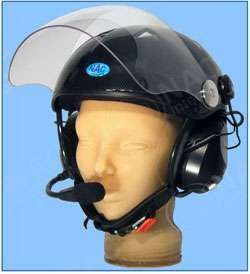
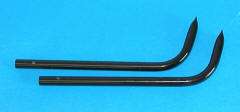
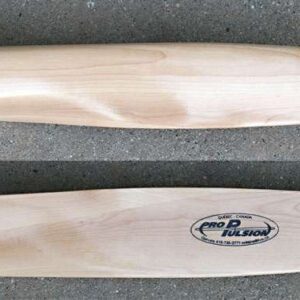
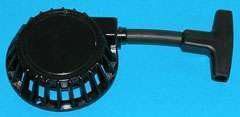
Reviews
There are no reviews yet.